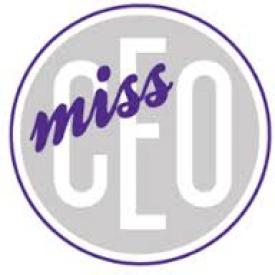Lack of talent, lesser development opportunities and gender bias keep women from reaching the top.
Talks on gender diversity have made their way into the boardrooms but has it also resulted in more women reaching there, is yet to be seen. A recent TimesJobs study on gender diversity in India, reveals that around 40 per cent organisations anticipate more female employees at the middle level in their workforce. However, surprisingly only 5 percent see a rise in the number of women at the CXO levels.
The study shows that there still lies a yawning gap, between aspiration and reality. To truly realise the potential of diversity, this gap needs to be addressed by India Inc. Nearly 35 per cent organisations out of the 860 surveyed are focussed on increasing representation of women at senior levels. Due to looming challenges, however, only five per cent actually feel they will gain in any way. A further 30 per cent are planning to increase women’s representation at the middle level, and here, they are far more optimistic at making a positive impact.
Lack of talent, lesser development opportunities and gender bias are the major reasons that hold back women from reaching the top. The report states that 30 per cent organisations cite lack of supply of talent as the prime hurdle in having more women leaders. About 20 per cent say there are very few opportunities for women to develop at work, while another 20 per cent blame the bias in the recruitment process itself. 15 per cent state attitude towards women’s capability as a roadblock, while 10 per cent are concerned that there are too few women role models or mentors out there. The remaining five per cent believe that women tend to undervalue their own skills or experience slows them down.

On the other hand, explaining the benefits of women in senior profiles, Sasha Sanyal, senior vice president strategy, diversity & inclusion leader, Genpact says “Companies with the highest number of women board directors and senior managers outperformed those with the least, on several counts like higher returns on sales as well as innovation and group effectiveness in solving problems.”
Irrespective of the importance of having more women in senior roles, organisations have different reasons for recruiting women. Interestingly, 40 per cent organisations prefer women in senior posts to access a wider talent pool, 25 per cent do so to improve business performance, 20 per cent do it to enhance corporate reputation/brand image, 10 per cent state better corporate governance as the reason, while five per cent do it out of compulsion / pressure from internal and external stakeholders.

Nilanjan Roy, head of strategy, Times Business Solutions says, “India Inc. has made significant strides in building a consensus on the benefits of gender diversity lately. However, this study clearly shows there is still a big gender imbalance in their talent pipelines. Many organisations still suffer from diversity issues. Massive HR potential is lost dues to stringent work timings causing a lack of female talent, primarily at senior levels. This imbalance can be overcome with flexible women-centric policies and a consistent employer branding strategy backed by skill development and training that enhance their organisation’s reputation as a great place to work for women.”
Raising another concern regarding gender bias, the study revealed that 55 per cent organisations admit to the existence of a compensation gap between women and men in their organisation. They are taking measures to amend this by offering intangible benefits to women in their workforce in the form of flexible working hours, targeted opportunities for development, training programmes and support networks, etc.
In addition, as part of their future gender diversity and inclusion programmes, nearly 40 per cent organisations state they have assigned gender targets/quotas for recruitments/promotions. 30 per cent say they will put in place rigorous recruitment/selection processes and 20 per cent aim to design jobs keeping in mind flexibility. 10 percent are looking at the training needs of women employees.
Value our content... contribute towards our growth. Even a small contribution a month would be of great help for us.
Since eight years, we have been serving the industry through daily news and stories. Our content is free for all and we plan to keep it that way.
Support HRKatha. Pay Here (All it takes is a minute)




































